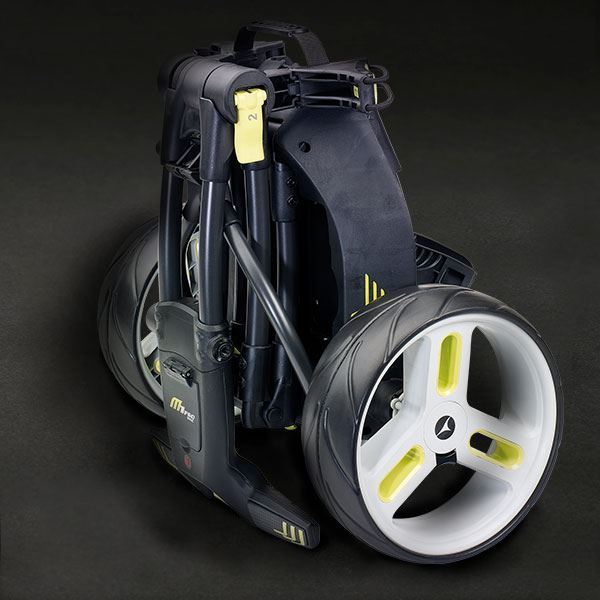
You may look at electric golf trolleys and wonder why those with lithium batteries are significantly more expensive than those with lead-acid batteries.
If you are interested in finding out how lithium power will actually save you money in the long term and also improve your golf, you have come to the right place.
In this article, we will look closely into the compelling reasons why 90% of golfers choose to pay more for an electric golf trolley with a lithium battery over a cheaper lead-acid powered version.
Please read on to find out more.
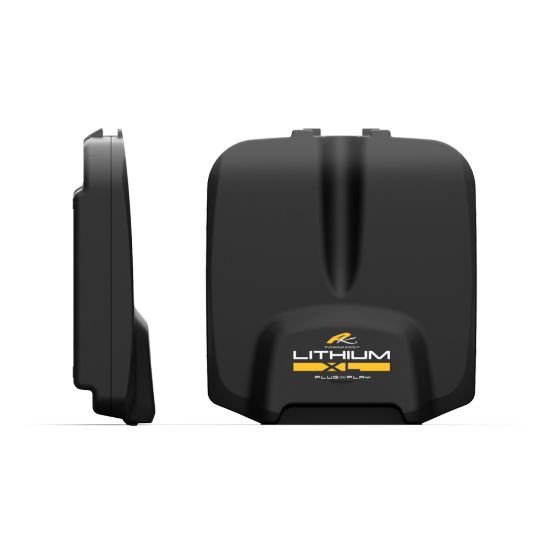
8 Reasons to Use An Electric Golf Trolley With A Lithium Battery
Here is a list of 8 proven arguements of why you should consider lithium powered over lead-acid powered golf trolleys:
1. Lithium batteries last longer
Lithium batteries are proven to last up to five times longer than lead batteries before they need replacing. A typical lithium battery has a cycle life of upwards of 2000 charges. Lead batteries, by comparison, have a cycle life as low as 500 charges potentially meaning you may only get a full season of golf from your new trolley with a lead-acid battery.
Bear in mind that a replacement lead-acid battery can cost over £35 and it means that you may have spent £175 (5 x £35) on replacement batteries before your lithium battery needs replacing. It is £175 extra that you could include in your budget when looking for a trolley, perhaps allowing you to consider lithium power.
Top brand, Motocaddy are so confident about the durability of their lithium batteries that they even offer a five-year guarantee on them.
2. Electric golf trolleys with lithium are lighter
Lithium golf batteries are half the weight of their lead-acid counterpart. One of the lighter electric golf trolleys on the market is the Powakaddy CT6 which weighs in at just 11.9 kg including its lithium battery. Compare this with the Ben Sayers lead-acid electric golf trolley which weighs 22 kg including the battery. A heavier weight increases the risk of injuries and strains when moving your trolley in and out of your vehicle boot, especially if the boot has a high sill.
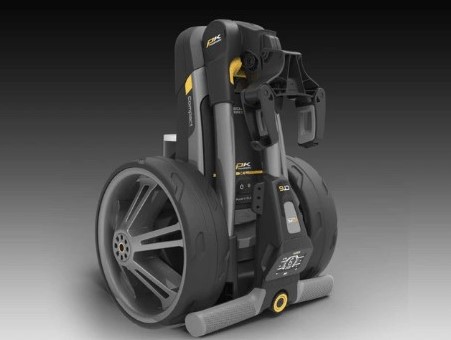
3. Electric golf trolleys are smaller
Lithium batteries are roughly half the size of a lead-acid battery. It allows an electric golf trolley to be a lot more compact when folded. The CT6 folded size is 51 x 43 x 38 cm. Compared to the Ben Sayers Lead Acid Trolley, which is 89 x 52 34 cm when folded and the difference is marked. There is also an increasing demand for compact-folding golf trolleys where the battery stays in its tray once folded up and placed in a car boot.
4. Battery charge speed
How much time does it take to charge a lead-acid battery?
If you play golf most days, the average 8 hours it takes to charge a lead-acid battery will certainly prove frustrating. Furthermore, if lead-acid batteries are just partially charged, it can lead to sulfation damage resulting in further reduced battery life.
How much time does it take to charge a lithium golf trolley battery?
Lithium batteries take half the time of a lead-acid battery to charge. In comparison to lead-acid, lithium batteries reach up to 80% of capacity with just one hour of charging, and there is no risk to the battery with partial charging. A full charge takes only 3 hours of continuous charging.
A detailed video that explains the difference between a lithium and a lead-acid battery
5. No additional maintenance
A key advantage of lithium over lead-acid is that no maintenance is required. Lead-acid batteries need regular checking for chemical leaks and spills. If you do not keep your battery clean, battery acid, dust and dirt can all create leakage currents which can cause a battery to discharge itself and become unbalanced.
6. Improved on course performance
Although weighing half as much, a lithium battery enables an electric golf trolley to achieve a higher weight to performance level than a lead-acid powered trolley. The lighter weight allows the trolley to get to maximum speed with less effort. Significantly, as lithium batteries have the same voltage output whatever the percentage of charge, the trolley continues to perform. Lead-acid powered trolleys lose performance and voltage output once 70% or more of the battery capacity has been spent.
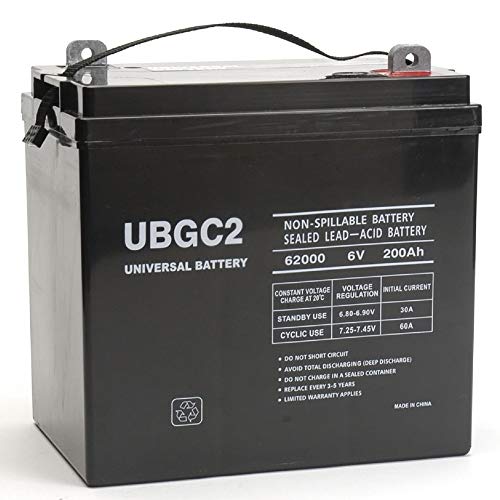
7. No fiddly wires to connect
Lead-acid batteries need to be plugged and unplugged from their electric golf trolley tray for charging to take place. Battery cables consist of twin wires that need connecting, and sometimes these can also get damaged. Lithium batteries do not have wire connections and are typically plugin and play.
8. Eco-friendly reasons
A lithium battery puts less pressure on the surrounding environment. Less energy deploys as lithium batteries take less time to charge, and significantly does not have components containing hazardous materials like toxic lead and acid in lead-acid batteries that are very harmful to the natural environment.
Furthermore, in the manufacturing process, lead-acid batteries require much more raw material than lithium to achieve the same level of energy storage, meaning the whole mining process is also environmentally damaging.
What Is the Best Lithium Battery for A Golf Trolley?
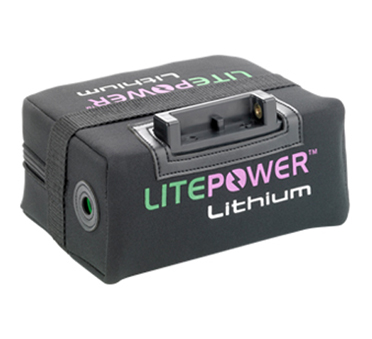
Many electric trolley brands, including Powakaddy and Motocaddy, come with their in-house lithium batteries which are excellent. Suppose you are looking for a replacement lithium battery, as well as the trolley manufacturers. In that case, further battery options are available from brands like Ultramax, Maxi Power, Relion and litePower that produce excellent universal, electric trolley compatible lithium batteries.
The attributes of the best lithium battery that you should consider as part of buying a new trolley or replacing an existing battery include the following:
- How long does it take for the battery to charge fully?
- Regarding battery life, what are the number of charge cycles of the battery?
- Does the battery have extended output for 36 holes?
For an in-depth look at the best lithium batteries for golf trolleys and important considerations, we have produced a detailed guide which you can see here.
Summary
Golf is a beautiful game, and our mantra at Electric Golf is to focus on your golf, not your fitness. Lithium batteries are so much lighter and smaller than their lead-acid counterparts enabling trolley manufacturers to produce compact, lightweight electric trolleys, leading to less weight for you to lift.
Trolley performance with lithium power is more stable than lead-acid when the battery charge is low. It means that you are less likely ending up pushing your trolley midway through a round through battery failure, especially if you follow our 5 tips to optimize your battery performance.
Combined with a life expectancy five times that of lead-acid batteries, it is little wonder that the majority of golfers choose lithium batteries with golf trolleys.
FAQs
How should I take care of my lithium battery?
To keep your lithium battery in top condition, you need to follow three easy points:
- Make sure to charge up your lithium battery no longer than 48 hours following use.
- Keep your battery stored separately from the trolley until it is next needed as very little discharge will take place. Even if you do not play over the winter, your lithium battery can remain in a half-charged state without the need to top up.
- Make sure your battery is in an environment which is neither too hot nor too cold.
Should I keep my golf trolley battery continuously on charge?
To maintain your lithium battery properly, you should avoid keeping the battery connected to the charger for more than 48 hours following a full recharge.
How long to golf trolley batteries last?
A lithium battery with regular use can last for approximately five years. Lead-acid batteries, by comparison, need replacing from as little as 12 months of use.
Why are lithium batteries more expensive?
The main cost is because the cells that house the lithium also contain several additional expensive and rare compounds, sharing similar technology to components within an electric car and mobile phone batteries. Additionally, the electronics that control the battery are high quality and are manufactured in high-tech surroundings as opposed to a factory floor for lead-acid batteries.
Can I replace my lead-acid battery with a lithium battery?
The answer is yes, some brands of lithium battery such as LitePower can replicate the attributes of a lead-acid battery, allowing them to work on any trolley using a lead-acid battery. The trolley does not need any adjustments or alterations to work effectively.
Can I use any charger for my lithium battery?
A lithium battery should never be charged using a charger designed for a lead-acid battery. For avoiding charging problems, it is best to use a charger recommended or provided by the battery or trolley manufacturer.
Read our buyer guide on the best electric golf trolley lithium battery.
